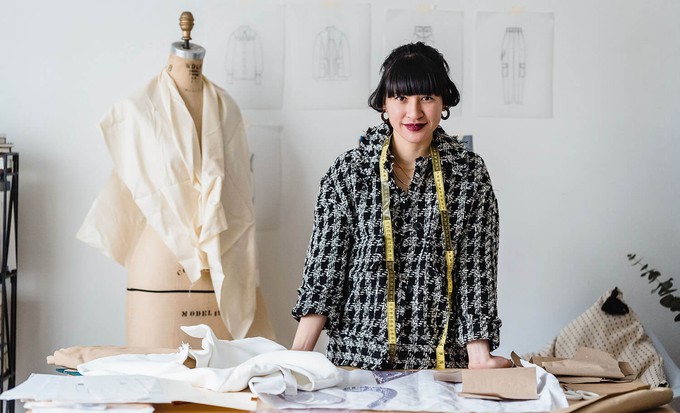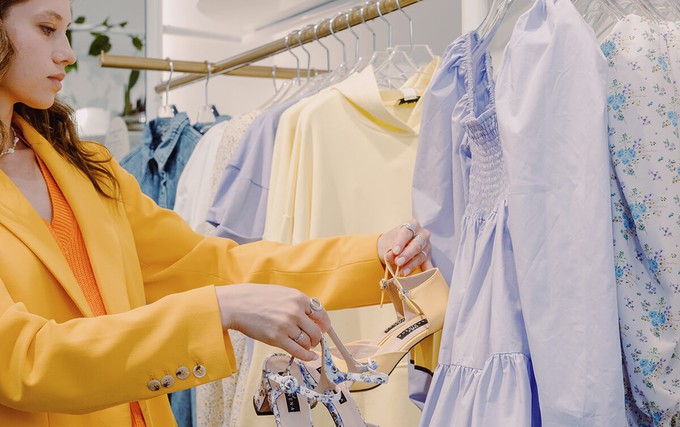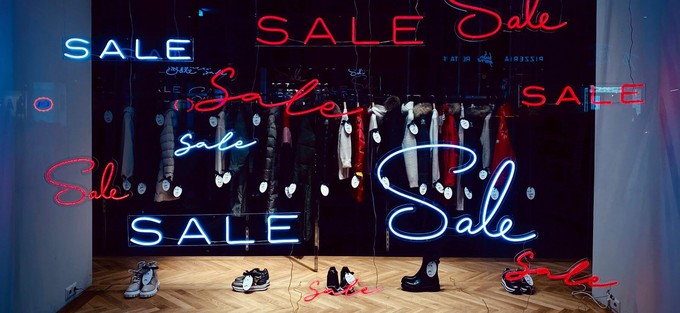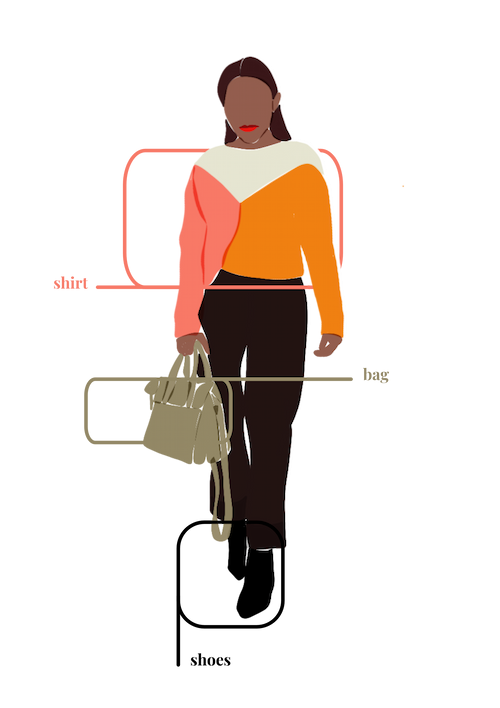- Clothes
- Bags
- Accessories
-
Inspiration
- Shoes
How the Fashion Industry Works: From Seed To Your Wardrobe

When thinking about who made our clothes and how, it’s easy to stop at that brand name.
In reality, there are so many additional people, moving parts, and steps that go into the finished products you wear. Each of them can also make them more or less sustainable.
So, if you’re trying to make more ethical clothing choices (high five!), it’s helpful to understand how the fashion industry works in practice.
Here’s a simple breakdown so that you always know what to avoid or prioritise.
What are the four levels of the fashion industry?
The fashion industry has four main levels (which fast fashion and ethical companies approach very differently): primary, secondary, retail, and auxiliary.
1. Primary level: raw materials and textile production

This is what makes the BIGGEST difference from an environmental point of view. In fact, most of fashion’s carbon emissions come from this initial phase!
Key activities
- Cultivating or sourcing natural fibres – These can be plant-based (like cotton, bamboo, linen, and hemp) or derived from animals (like wool, leather and silk)
- Producing synthetic fibres – These involve different raw materials (usually petroleum-based) and chemical synthesis. Some popular fabrics made with synthetic fibres are polyester and nylon
- Fabric finishing – Through additional steps (like spinning, weaving, knitting, and dyeing), those initial fibres are turned into ready-to-be-used textiles
Sustainability and ethical challenges
- Sourcing materials and fabrics in an eco-friendly way – Most fabrics come with some disadvantages from an eco-friendly perspective, both natural (like the pesticides used for cotton) and synthetic ones (for example, polyester is derived from fossil fuels and has a highly polluting production process). This is the same with their additional steps, like the dyeing stage. To keep their costs down, most fast fashion brands produce their clothes without taking the environment into consideration. The most ethical ones, on the contrary, work hard to make their entire supply chain as eco-friendly as possible (for example, by choosing kinder fabrics like certified organic cotton and recycled polyester). I believe the fashion industry should focus on developing and scaling more innovative sustainable materials, too
- How farmers and workers are treated – Sadly, a lot of fast fashion brands hide child labour (especially in cotton production) and sweatshops where garment workers are mistreated, underpaid, abused, and kept in modern slavery conditions
2. Secondary level: fashion design and manufacturing

This stage mainly involves designers and brands, and it’s when your clothes are actually made.
Key activities
- Planning a line concept – Fashion designers and brands usually start by conducting research and brainstorming ideas
- Line development – They then turn those initial concepts into proper designs through sketches and prototypes. This usually involves presenting the line and creating samples to get feedback so they can improve it accordingly, too
- Production and finishing stages – In most cases, the bulk of the work (like cutting and sewing the fabrics) is outsourced to garment factories. As well as manufacturing the actual clothes, this stage involves additional steps like ironing and steaming them, adding labels, and performing quality control checks
Sustainability and ethical challenges
- How a garment is designed – Fast fashion creates disposable clothes that are literally designed to fall apart, focusing on cutting costs and promoting overconsumption—without worrying about their environmental footprint. Sustainable brands and designers plan them with an eco-friendly approach (for example, by using recycled materials to reduce waste) and, whenever possible, with circularity in mind. So, these clothes are made to last and can be reused or recycled at the end of their lifecycle
- Choosing the right suppliers – To cut costs, fast fashion brands often outsource to sweatshops, whereas ethical brands use their own factories or reliable suppliers (for example, by checking them regularly or requiring third-party certifications)
3. Retail level: distribution and sales

Time to connect the finished product with end consumers like you!
Key activities
- Wholesaling – Some brands and clothes manufacturers distribute their products to physical retailers
- Retailing – These products are sold directly to consumers through physical stores, online stores, or third-party online platforms
Sustainability and ethical challenges
- Shipping – This means additional carbon emissions. Luckily, the most sustainable brands try to minimise them (for example, through multi-drop services, electric vehicles, or by planting trees to offset their emissions)
- Selling – Fast fashion brands sell clothes in a way that encourages overconsumption (like with ridiculously low prices, new trends every week, or triggering FOMO). Instead, it’s more challenging to do business as ethical brands: they design and produce their clothes as sustainably as possible, have higher costs, and make durable items that last for years. Due to their lower margins, they also can’t usually afford to have physical stores. So, consider supporting brands that are doing their part for their planet and treating their workers fairly: invest in fewer but higher-quality items. On Project Cece, you can browse the range of hundreds of fairtrade brands, using our filters to narrow down your choices
- Transparency – Fast fashion brands rely on greenwashing or are super vague about their supply chain. Instead, sustainable brands are transparent (especially on their websites), telling you who made their clothes and how because… they have nothing to hide!
4. Auxiliary level: support services for the fashion industry

The previous stages are mostly about a brand’s supply chain. But for the whole fashion industry to work and function effectively, additional support and layers are needed, too.
Key activities
- Marketing, media, and advertising – This ranges from fashion journalism to influencer partnerships and how a brand promotes its clothes
- Professional and trade organisations – These bring different types of fashion professionals together, give them more tools to succeed, or help them work towards shared goals
- Consulting and education – Like training new industry professionals and upskilling existing ones
Sustainability and ethical challenges
- The role of marketing – The difference between fast and slow fashion isn’t just about how clothes are made: the way they’re marketed to consumers (for example, as throwaway or durable pieces) has a strong impact on the environment, too
- Taking action – The auxiliary level can also help advocate for sustainable practices and inspire people to take action, making the fashion industry more ethical
So, now that you know how the fashion industry works, consider supporting ethical brands that make a conscious effort at every stage of their supply chain.
Share our story
Related articles
Fast Fashion's Environmental Impact: Your Clothes' Real Cost
Low price tags, HIGH cost for the planet. Here’s a jargon-free overview of fast fashion’s environmental impact—and what YOU can do about it.
How to Check if a Brand is Sustainable: 7 Effective Tricks
Enough with greenwashing! Here’s how to tell if a brand is actually as sustainable as it sounds or just another fast fashion company pretending to be ethical.
The Journey of Your Clothing: A Typical Fashion Supply Chain
Ever wondered how clothes go from raw materials to finished goods? Here’s what a fashion supply chain looks like & the difference between a fast/slow approach.
Project Cece is a platform that collects ethical fashion from vetted brands and shops in one place. Browse ethical fashion for women and men and find items that fit your style, budget and values!

_large.png)


